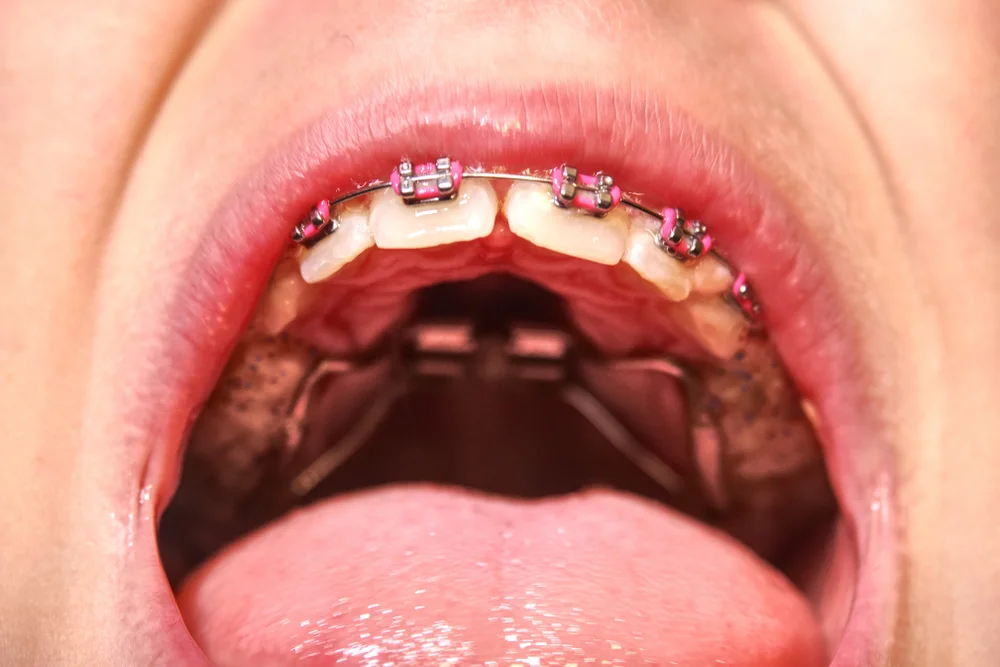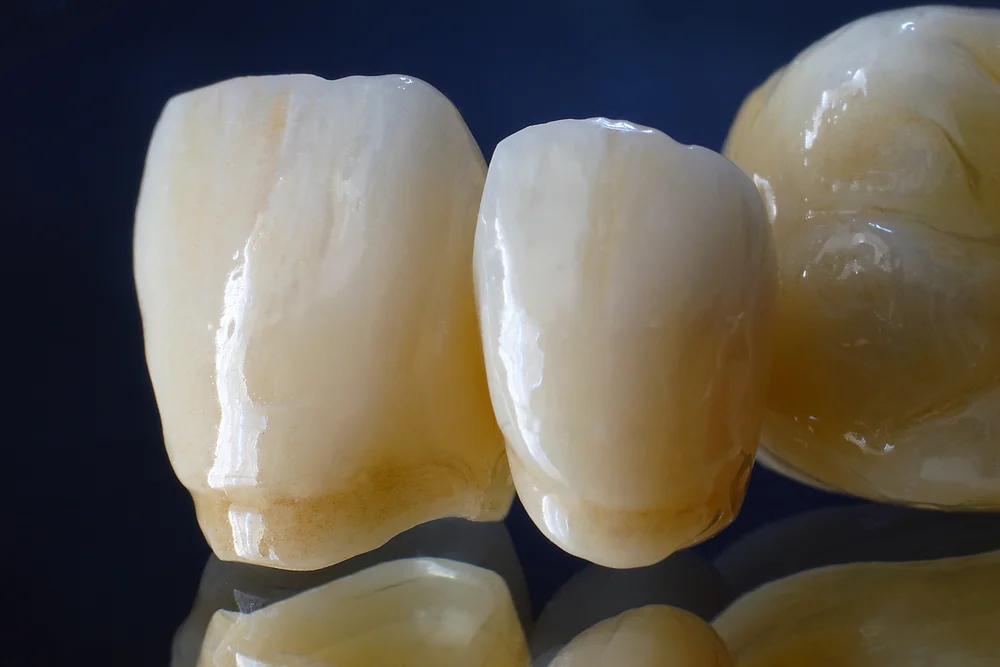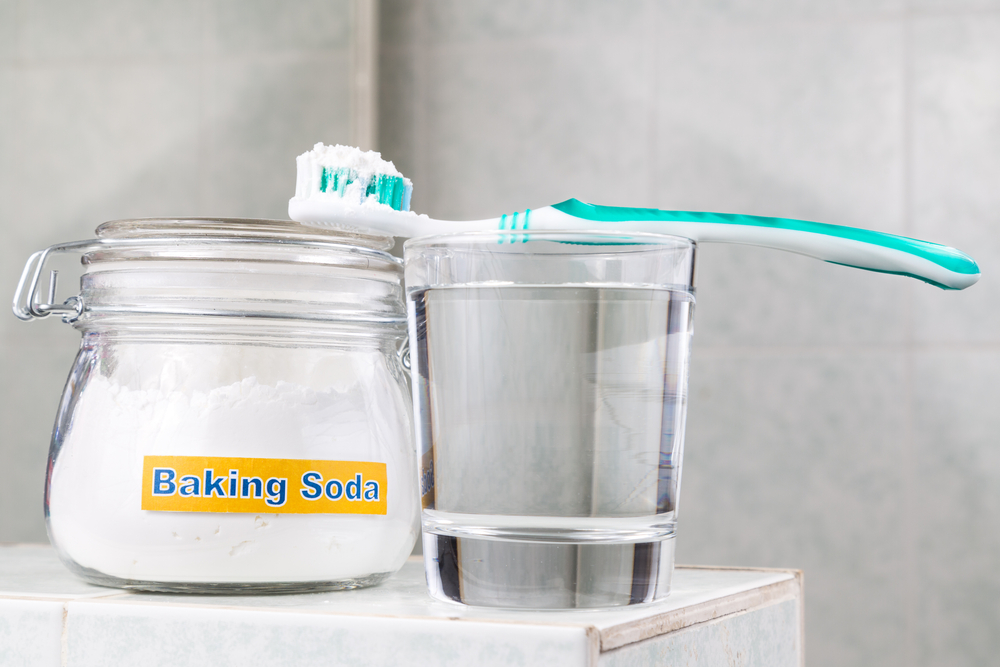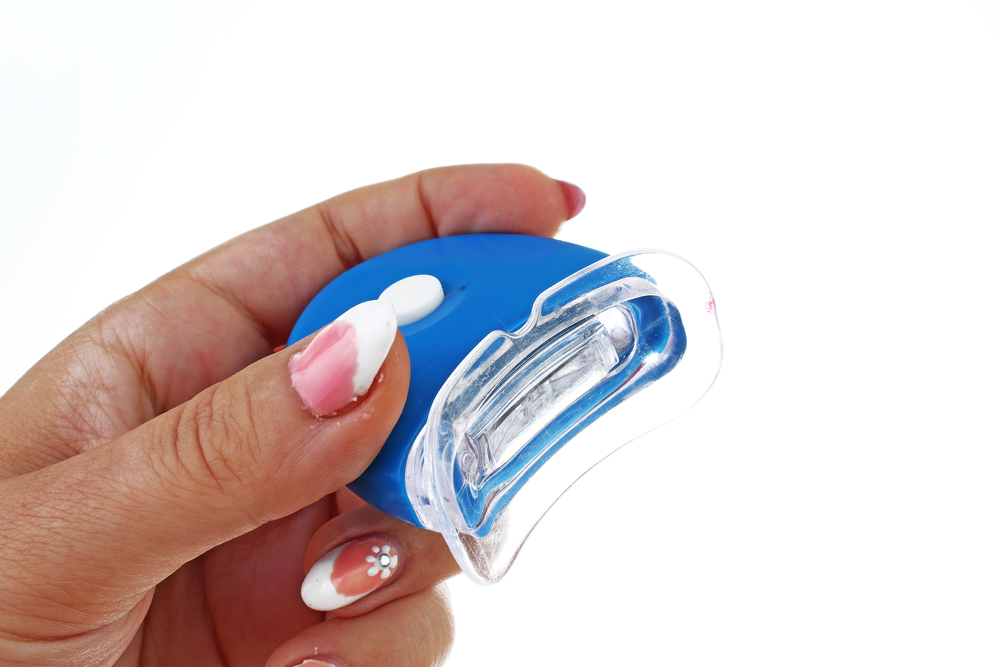- Palate expanders are most successful in children.
- Adults might be able to get their palates expanded, but the process is difficult and unreliable.
- Expanding your palate could change your smile in a favorable way.
- There are a wide variety of palate expanders, some of which can be removed for certain activities such as eating and swimming.
For adults, the roof of your mouth feels like a single strong bone, but it wasn’t always that way. Before you hit puberty, your palate, also known as your maxilla, was comprised of two bones that came together at the center, or the midline suture. Eventually, these bones fuse, but before they do, they can be fairly easily adjusted using a palate expander.
What is a palate expander?
This custom-made orthodontic device, also called a jaw widener, is designed to widen the palate in order to treat a wide range of dental concerns. It literally stretches the cartilage between the bones of your palate, making room for new bone to grow.
These orthodontic appliances are most commonly used in young children whose palates have not completely fused. However, some orthodontists suggest that palatal expansion is possible in adults, although the process is more difficult.
What do palate expanders look like?
Many of the palate expanders on the market operate in a similar manner. For the purposes of this article, we’ll speak generally about palate expanders, with a focus on rapid palatal expanders, which are among the most common type. If you’d like to learn more about the various palate expanders, see our question below on the different types.
Traditional palate expanders attach to the roof of your mouth. Typically, wires wrap around some of the upper teeth in the back and the sides of your upper jaw. These wires meet in the middle at a metal gear. In some cases, this central gear is encased in molded plastic.
Palate expanders are customized to fit the patient, so the gear should fit snugly in the top of the mouth. It will be visible to anyone who looks closely or catches you laughing or yawning but it is not as obvious as traditional braces.
View this post on Instagram
How do palate expanders work?
Traditional palate expanders work using a special key. Each half of the device is attached to a half of the palate, as described above. The key cranks the device, widening the space between the separate halves.
The orthodontist will give the device its first crank and show you how to do the same. From then on, you or your child will be responsible for cranking the device. Your orthodontist will tell you how much and how frequently to crank it. Try to be as consistent as possible. Crank it around the same time of day each time to ensure that the time between cranks is close to even.
According to Dr. Gavin Mack, a consultant orthodontist at 92 Dental in London, cranking will typically result in a gain of about one millimeter a week. This might not seem like much, but it’s important that you take it easy and not rush the process. “The best practice with palate expansion is to do it slowly,” says Dr. Mack. “This allows both the jaws and the roots of the teeth to adjust.” If the adjustment is rushed, more dental work could be in your future.
Some types of palate expanders do not require any key cranking. The quad helix device, for example, works under the pressure of the device itself. Although it is effective, it reportedly comes with limited skeletal change. In other words, it might not have as dramatic an effect as devices that require manual cranking, and could be insufficient for some patients.
RELATED: Lingual Braces — The Pros and Cons of Invisible Teeth Straighteners
What do palate expanders treat?
A narrow palate can lead to several dental issues, most of which are related to the idea that your mouth is not large enough to accommodate your teeth.
- Crossbite: When your upper jaw doesn’t match your lower jaw, crossbite can occur. This means your teeth aren’t aligned properly, leading to bite problems. For example, your upper back teeth might bite down on the inside of the lower back teeth instead of lining up. This condition can lead to other orthodontic problems and affect your smile. Widening the upper jaw, and sometimes the lower jaw, can help realign the teeth.
- Crowding: Put simply, this means your mouth isn’t big enough to accommodate all of your teeth. Palate expansion can be used to make your mouth larger, eliminating the need to extract permanent teeth.
- Impacted teeth: An impacted tooth is a tooth that has formed beneath the gum but doesn’t have the necessary space to break through to the surface. Widening the jaw can make the necessary space. Where palate expanders are concerned, this most often happens with canines and eye teeth.
- Breathing problems: A very narrow jaw can block airflow in the nasal passages, leading to conditions like sleep apnea. Widening the jaw will help open these passages and improve breathing.
- Cleft palate: Patients with this condition will sometimes have their palates widened before they undergo corrective procedures.
Many patients who get palate expanders go on to need braces or other orthodontic treatments. According to Dr. Mack, “palate expansion is usually done before orthodontic treatment.” He emphasizes the importance of correcting bite issues before straightening teeth with braces, likening it to “setting up a solid foundation before you build a house.”
Do palate expanders hurt?
The idea of turning a gear inside your mouth, or your child’s, might have you a bit on edge. After all, you don’t want to be signing up for months of pain. The truth is it’s not as bad as you think.
When the palate expander is first placed, there will be some discomfort. Your jaw will be sore from the pressure of the device. You’ll also have difficulty speaking and eating as your tongue adjusts to the presence of the device. During this time, you might salivate excessively, which can be uncomfortable but will dissipate with time.
When you turn the key in the device, you shouldn’t feel pain. You will feel pressure in the roof of your mouth, your teeth, behind your nose, and possible even between your eyes. If you feel pain, stop turning the device and contact your orthodontist immediately. If the pain is bad enough, you can turn the device in the opposite direction to relieve pressure.
How long do I have to wear my palate expander?
On average, patients wear expanders for four to six months. It takes one to three months to achieve the desired width. Then your orthodontist will leave the expander in place for an additional few months to allow bone to grow in the gap created by the device.
Palate expansion is permanent in most cases, but there can be some narrowing of the palate as it settles. Your orthodontist might choose to overexpand your palate to account for any relapse and ensure that the necessary width is achieved.
Will the palate expander change my face?
Some people report dramatic changes in their face or that of their child and others don’t notice any difference. This disparity could be due to differences in the degree of expansion. It could also come down to how gradual the expansion is.
If you notice any changes, they’ll center around the upper jaw and nose. Your nose might become flatter and your smile might become broader. For children, whose faces are still developing, changes occur regardless and it is difficult to tell what is the result of palate expansion and what can be chalked up to a natural growth process.
A gap of one or two millimeters can develop between your front teeth when the palate expander is in use. The teeth are pulled apart because they are each attached to a different palatal bone. This is normal and can be corrected with a small set of braces after you’re finished with the expander.
Should I avoid certain foods with my palate expander?
When you first get your expander, give your mouth a break and eat soft foods, like mashed potatoes and ice cream. After a day or two, you’ll stop salivating as much and your jaw won’t ache as much. You can then resume normal eating. However, you’ll probably still want to avoid sticky candies, like Jolly Ranchers, that can get stuck in the device and jam the expansion screw.
How do I clean my teeth with a palate expander?
Just as with braces, plaque can build up where the palate expander connects with the teeth. Make sure to floss and brush regularly. Use a proxy brush to get around the edges of the device. You can also try a water flosser for easier cleaning and you can lightly brush the device itself to keep food from collecting in the gears.
What are the different types of palate expanders?
It’s likely you’ll be fitted with a fixed palate expander that cranks in the middle. However, there are several different types you might want to explore with your orthodontist. The following list covers a handful of the more popular devices to give you an idea of the general variations available.
- Rapid palatal expander: This is the traditional palate expander described in this article. Types of rapid palatal expanders include the Haas and hyrax expanders. This process is sometimes referred to as rapid maxillary expansion.
- Schwartz appliance: Like the rapid palatal expander, this expander requires regular cranking with a key. However, it is removable. It’s recommended that this device be worn 24 hours a day, except when eating, brushing your teeth, swimming, or playing contact sports. This device can also be worn around the upper or lower teeth.
- Quad helix palate expander: This fixed palate expander does not require any cranking. It is used to widen the front or back of the jaw. It curves with the palate, pushing the teeth outward to expand it. This palate expander is slower than devices like the rapid palatal expander, but is similar to the W arch expander.
Put simply, you can choose between rapid and slow expansion and removable or fixed devices. Beyond that, the device your orthodontist recommends could come down to personal preference.
» Want to learn more about your palatal expansion options? Meet our medical review team for more information.
Can adults get palate expanders?
As was mentioned above, this is up for debate. Many websites will tell you that palate expansion for adults is impossible because the palate sets at puberty. Some adults do undergo treatment with palate expanders, but results are often mixed.
Adults who do undergo palate expansion often do so with the help of surgery. An incision is made in the palate to separate the two bones that fused during puberty. However, some efforts have been made to expand adult palates without surgical intervention.
A 2000 study published in The Angle Orthodontist explored the possibility of palate expansion in adults using a traditional Haas expander and no surgery. The researchers compared the performance of the expander in 47 adults and 47 children. Ultimately, the Haas expander was deemed somewhat successful in the adults, although not nearly as successful as it was for the children.
One of the researchers expanded on these results in a 2011 study published in the American Journal of Orthodontics and Dentofacial Orthopedics. He noted that nonsurgical palate expansion in adults works differently. Most of the widening starts with the alveolar process, the bone on which teeth grow, as opposed to the palatal bones.
Dr. Mack notes that palatal expansion “works best in people between the ages of eight and twelve” because the jaw is “most malleable to outside change.” He goes on to state that when you’re older, palatal expansion “generally takes longer, is more painful, and has less permanent results.” However, he concedes that successful palatal expansion in adults is not impossible.
How much do palate expanders cost?
Prices depend on where you live, who your orthodontist is, and your overall treatment plan. However, palate expanders typically run around $2000 to $3000. Insurance often covers the cost of palate expanders, but that can depend on why you or your child needs one.









